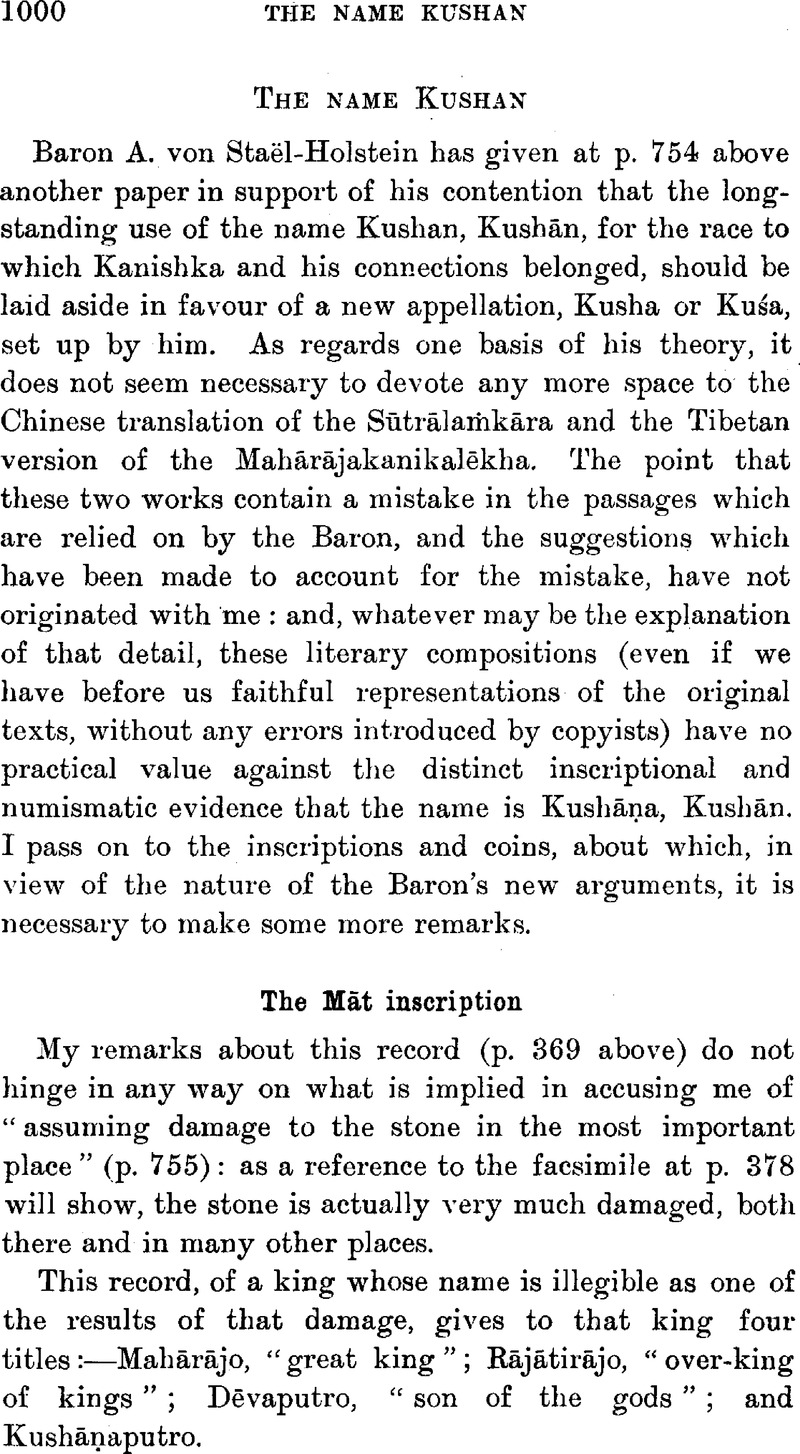Article contents
Abstract

- Type
- Miscellaneous Communications
- Information
- Copyright
- Copyright © The Royal Asiatic Society 1914
References
page 1001 note 1 The “ipsissima verba” of an authority (Dr. Vogel) to which the Baron refers in note 2 on p. 754 as supporting his proposal are simply:—“It is true that there is a depression which might be taken for an anusvāra, but this part of the stone is damaged to such an extent that it may just as well be casual.”
page 1002 note 1 The references are, for 1854, JASB, 23. 705, and plate, No. 4; for 1863, JASB, 32. 145, 150; and for 1875, ASI, 5. 61, and plate 16, No. 4.
page 1002 note 2 The Baron, says “(C. does not even mention the third letter)”.Google Scholar This is in a way correct; at any rate for Cunningham's remarks in 1875, when he only speculated as to the values of the first two syllables, where he was then trying to find a king's name. But in the figuring given therewith, as also in the earlier one, he distinctly showed three syllables. It is impossible to say why he did not try to decipher the third one.
page 1002 note 3 They were actually read by Cunningham, as rājaGoogle Scholar, without any hesitation, when he dealt with this record first, in 1854, in his treatment of it which the Baron has “ignored”.
page 1004 note 1 Mr. Pargiter has proposed (pp. 646, 650, above) to read ṇo, and to find here Gushaṇo, as the foreign nominative singular of the base Gushaṇa, = Gushāṇa, Kushāṇa, used, in foreign fashion, instead of the base, as the first member of the compound. As he has said (p. 651, note 1), his reading would strengthen the case which I support: at any rate it would not help the Baron's view. But I regret to have to say that, for reasons already given (p. 373, and note 2), I cannot agree with him: I retain the belief that the syllable is ṇa.
page 1005 note 1 Whitehead, , Coins in the Panjab Museum, vol. 1, plate 16, No. 76; and see p. 156Google Scholar, note 2. Compare Gardner, , Coins of the Greek and Scythic Kings of Bactria and IndiaGoogle Scholar, plate 23, fig. 8.
page 1005 note 2 The legend is in Greek characters, cursive; and the omicron in it represents an u, as it so often does in the Greek transliteration of Indian names, etc.
page 1007 note 1 The same practice, of marking the beginning of a legend by placing a substantial part of the general design between the last word and the first, and of subordinating other parts of the legend to the design, can be traced also on coins of other lands and other times: it is found even on our own coinage of a quite recent date.
- 1
- Cited by


